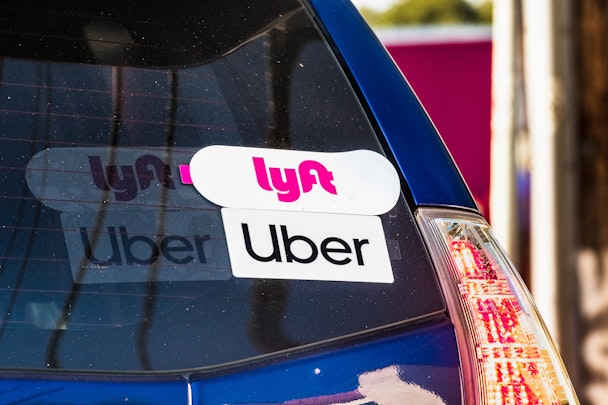T-Mobile enters rideshare advertising market with the acquisition of Octopus Interactive
Service provider T-Mobile has acquired Octopus Interactive, a leading provider of interactive screens for advertising and entertainment in rideshare vehicles. The news of the acquisition comes after a major spike in digital out-of-home (DOOH) ad revenue.

Digital out-of-home advertising revenue grew significantly in 2021
T-Mobile announced this morning that it has acquired Octopus Interactive, a platform that offers digital advertising and entertainment in Lyft and Uber vehicles. The acquisition offers a new outlet for reaching consumers both for the service provider and for Marketing Solutions, its adtech subsidiary company.
Advertising space in Lyft and Uber vehicles has become highly coveted for a couple of reasons: first and foremost, audience members (i.e, riders) are “captive,” and thus tend to be more engaged than they would be if they were, say, flipping through a magazine or driving past a billboard. Additionally, the demographics of Lyft and Uber riders tend to overlap closely with those of the target audiences that brands typically spend lots of time and money trying to reach. (Data from Octopus Interactive shows, for example, that almost 80 percent of riders are between the ages of 18 and 49, and that nearly half live in urban areas.)
Octopus Interactive’s video screens deliver geotargeted ads to Lyft and Uber riders, meaning that the content is curated depending on a rider’s location.
“Octopus allows us to highlight our library of rich media content and drive awareness amongst a younger and tech savvy demographic,” says Matt Stein, head of brand and creative strategy at Philo — an online entertainment streaming service — said in a statement. “We’ve seen engagement rates over 3.5% and QR codes convert extremely well given the captive rideshare environment.”
The terms of the acquisition also stipulate that T-Mobile will become the sole service provider for devices used by rideshare drivers in the U.S., “connecting thousands of drivers across the country to the Un-carrier experience,” per the company. “The Un-carrier” refers to T-Mobile’s marketing campaign in which they have positioned themselves as being the antithesis of other, less consumer-friendly service providers.
“With this move, we’re expanding our toolkit for marketers, meeting the needs of advertisers and empowering brands to better connect with consumers, beyond linear and traditional digital channels,” Mike Peralta, vice president and general manager of Marketing Solutions said in a statement. “As the Un-carrier, we’re committed to disrupting the ad tech space. We’re making good on that commitment through innovative solutions, like Octopus.”
Out-of-home (OOH) advertising — ads that are viewed and interacted with outside of consumers’ homes — has grown precipitously over the past year. According to data from the Out of Home Advertising Association of America, OOH ad revenue increased by 38% in the third quarter of 2021. The rise in digital OOH sales during that same time period was even more steep: close to 80%, per T-Mobile.

